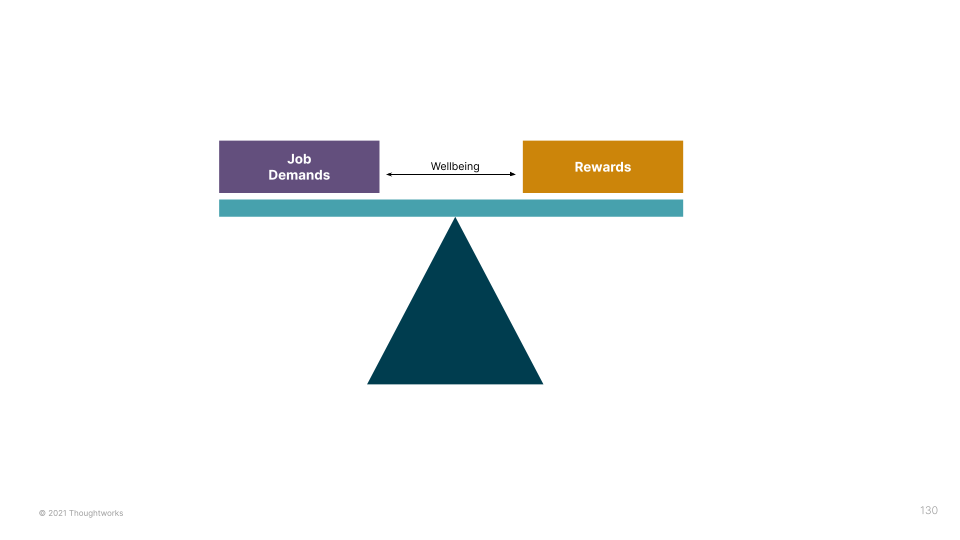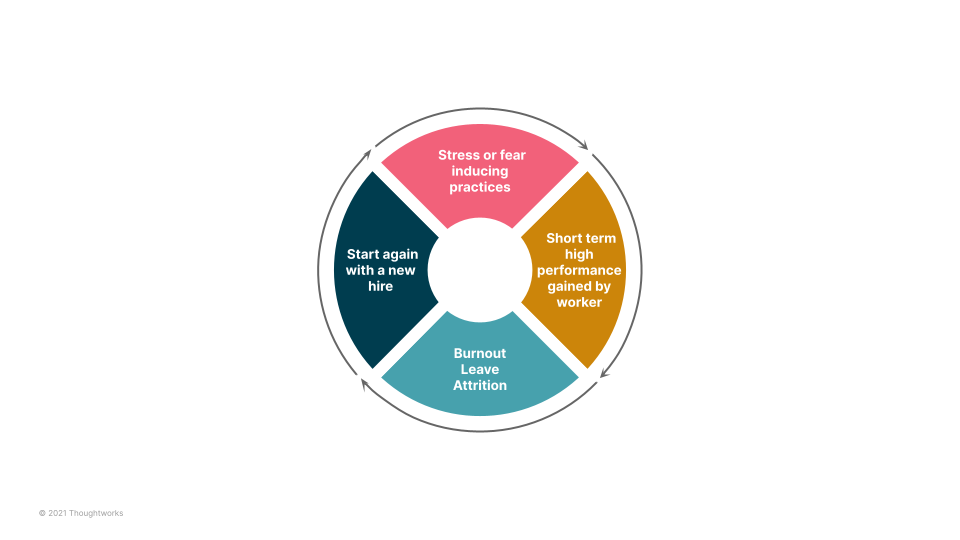As the labor market in IT has become increasingly competitive, the dynamics between employers and employees have enabled increased benefits to the latter. This has catapulted the topic of well-being at work to incredible relevance. It can be tempting to think the issue of well-being at work is one geared solely towards workers' satisfaction, but in reality it’s much more than just simply keeping your people happy. The truth is that actively working towards people’s well-being is a smart business move, because it’s directly connected with performance in a manner that leaders cannot ignore.
There are many variables that can directly affect people's sense of well-being at work. Things like worker personality traits and the particular demands of a job can play a major role. Well-being at work is a holistic concept in which job satisfaction, job responsibilities, engagement, stress and interpersonal relationships are key components. More than anything, we need to understand that having happy and healthy workers is not just “the right thing to do” — it also helps drive sustainable performance, which ultimately has significant organizational benefits.
What is sustainable performance?
In a nutshell, sustainable performance is about "stimulating high work performance as well as maintaining (and even enhancing) worker health and well-being". What this concept implies is that in order for high performance to be maintained for long periods of time, well-being needs to be supported and maintained in your teams.
To understand how well-being at work functions, the simplest way I’ve found is to think of a scale. On one side of the scale you have the individual’s job demands: responsibilities, stress, challenges, etc. On the other, you’ll find what they take out of their work — the rewards: wage, learning opportunity, esteem, security, sense of belonging, etc. Different people will be affected by different variables; in turn, these variables will have different subjective weights for them. For one person, if the stress is too high and the wage is too low there will be an imbalance. For another, the wage can be low as long as the learning opportunity is high. As long as there is a healthy balance on this scale, a sense of well-being at work will be achieved. The trick is to understand what are those variables for each individual and work to provide those “rewards” and balance out the “demands”.


When looking to stimulate high performance managers sometimes rely on little more than the application of pressure, with no regard for the costs or consequences, This means employees must simply deal with extra hours, micro-management or non-realistic deadlines as part and parcel of the job. Sadly, many of us have probably seen this kind of thing at some point in our career. And despite workers loathing these stress-inducing strategies, management returns to them time and again. This is because it often appears to work: people feel the pressure —sometimes fear — and do everything they can in their power to deliver.
However, even if this strategy seems to work in the short term, it isn’t sustainable. You may unlock what looks like high performance for a few months only for employees to soon become disengaged, bored or burnt out. Unfortunately, many leaders fail to see this — they’re often surprised when talented people leave them. This becomes a vicious cycle of bad talent management:


There can also be other stress inducers or variables that lead to lack of well-being that aren’t related to a manager’s actions. For example, misalignments between the job requirements and a worker’s characteristics are very difficult to control. A socially-driven and extroverted worker doing a back office job with little interaction with people, for example, will likely become quickly disengaged. In turn, a lack of motivation may then translate into poor performance.
However, while there are things beyond your control as a manager, there are plenty of things you can do to cultivate well-being.
Here are some useful strategies and principles that can help you get there:
Talk to your team: it's important to be close to the individuals that work with you and understand what is important to them. If we know that well-being works as a scale, ask yourself what it will take for someone to tip the scale in a healthy manner. You won’t always be able to give people everything they want, but just listening to them and doing your best to enable a sense of well-being based on what they need is a great start.
Work-life balance: enable work-life balance as much as possible. This is one of the most sought after benefits and will make a huge impact. Actively working towards this is a must if we want people to be happy and content with their work.
Autonomy: people want to have agency over their work. They want to be able to make decisions; they want to be creative. To do this, you need to give employees autonomy by showing trust and recognizing their skills and know-how.
Involvement: people want to have input on things that will affect them. Involving them in certain decisions will boost their motivation and engagement. Although people recognize that the final decision rests with the boss, the chance to express their opinions and feel heard is still highly valuable.
Feedback: feedback has been shown to be one of the most important factors workers need to be engaged with their job. Whether it is constructive feedback or recognizing what is being done well, talent thrives on this not only to grow but also to gain engagement in their jobs.
Caring for their people’s well-being at work should be part of any leader's job, and it will make a huge impact in the performance of their teams. Ultimately, it's not just a matter of empathy but also of performance. The sooner we understand this, the sooner we can create healthier and better teams for everyone.
Disclaimer: The statements and opinions expressed in this article are those of the author(s) and do not necessarily reflect the positions of Thoughtworks.










